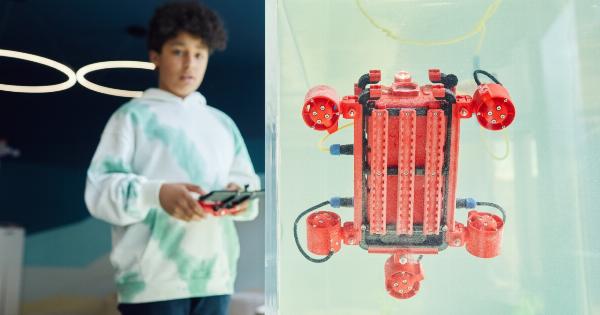Children with clamp control disorders and diarrhea, experience difficulties in controlling and managing their bowel movements. In turn, this can result in a significant negative impact on their physical, social, and emotional wellbeing.
The purpose of this article is to explore and understand the embodied experiences of children living with clamp control disorders and diarrhea.
Clinical Characteristics of Clamp Control Disorders
Clamp control disorders refer to a group of conditions that affect the normal reflex mechanism of the anal sphincter and rectum.
This results in a disruption of the normal coordination between the anal sphincter and the rectum, leading to loss of control over bowel movements. Three types of clamp control disorders are commonly seen in children:.
- Anismus: This is a condition where the muscles of the pelvic floor and anal sphincter spasm, causing an obstruction and making it difficult to defecate.
- Hirschsprung’s disease: This condition occurs when the nerve cells in the rectum do not function properly, causing a section of the bowel to become enlarged and obstructed.
- Rectal prolapse: With rectal prolapse, the rectum protrudes out of the anus, leading to difficulties in defecation and incontinence.
The Effect of Clamp Control Disorders on Children
Children living with clamp control disorders and diarrhea may experience a range of physical, social, and emotional difficulties due to their condition.
They may feel embarrassed or ashamed, leading to social isolation and avoidance of activities that may expose their condition. They may also experience physical discomfort, such as abdominal pain, bloating, and constipation.
Additionally, children with clamp control disorders and diarrhea may face challenges in managing their condition. They may require medication, dietary adjustments, and frequent toileting, which can prove taxing on both the child and their caregivers.
As a result, treatment may be complex and time-consuming.
Treatment Options for Clamp Control Disorders
The treatment of clamp control disorders depends on the type of condition the child is dealing with. Treatment options typically include medication, dietary modifications, and bowel retraining exercises.
In more severe cases, surgery may be necessary to correct underlying anatomical abnormalities.
In addition, it’s essential to provide supportive care that helps the child manage the physical, social, and emotional aspects of their condition.
Supportive care can include counseling, social interaction, and educational programs that aim to reduce the stigmatization and isolation of children with clamp control disorders and diarrhea.
The Importance of an Embodied Approach to Treatment
When it comes to providing care for children with clamp control disorders and diarrhea, it’s essential to adopt an embodied approach.
This means recognizing and addressing the wider physical, social, and emotional experiences that children may be going through, rather than just treating the medical condition in isolation.
An embodied approach recognizes that children are more than just their medical conditions, and requires providing care in a holistic context that considers factors such as social stigma, self-esteem, and quality of life.
Adopting an embodied approach can help empower children to manage their condition effectively, which can contribute to enhanced physical and emotional wellbeing.
Conclusion
Living with clamp control disorders and diarrhea can be difficult for children, as they must overcome physical, social, and emotional challenges that can impact their quality of life.
To provide effective care, it’s essential to adopt an embodied approach that focuses on addressing the child’s wider experiences, rather than just treating their medical condition. With comprehensive care, children with clamp control disorders and diarrhea can lead healthy, fulfilling lives.





























